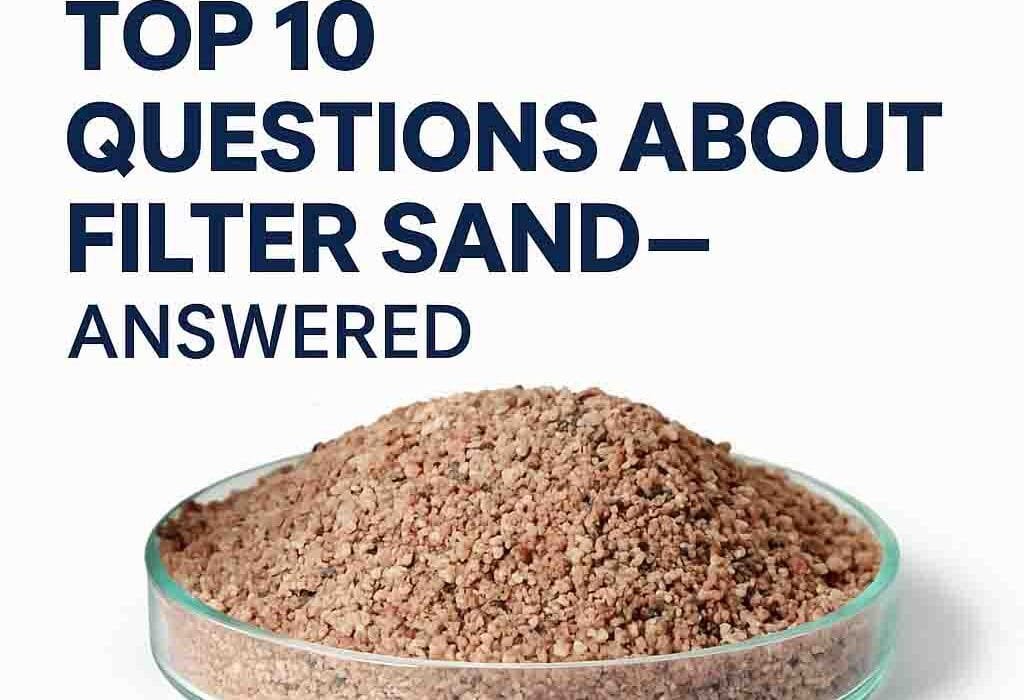Top 10 Questions About Filter Sand—Answered
Whether you operate a sewage treatment plant, a swimming pool, or an industrial filtration system, filter sand plays a vital role in ensuring clean and safe water.
But many engineers and plant operators still have doubts about its specifications, performance, and maintenance. In this blog, Starke Filter Media answers the top 10 frequently asked questions about filter sand clearly and simply.
1️⃣ What is filter sand used for?
Filter sand is used as the primary filtration layer in:
Pressure sand filters (PSFs)
Multimedia filters
Swimming pool filters
STP & ETP tertiary treatment
Its main job is to trap suspended solids (TSS) and reduce turbidity in water.
2️⃣ What is the effective size of good filter sand?
The ideal effective size (D10) depends on the application:
STP/ETP: 0.45 – 0.70 mm
Swimming Pools: 0.4 – 0.8 mm
Drinking Water Plants: 0.6 – 1.2 mm
The effective size determines how fine a particle the sand can filter.
3️⃣ What is the uniformity coefficient (UC) of filter sand?
The UC should ideally be < 1.5 for consistent filtration.
A lower UC means the sand grains are more uniform in size, leading to better flow and fewer chances of clogging or channeling.
4️⃣ How is filter sand different from regular construction sand?
Construction sand is:
Not cleaned
Irregular in size
Contains clay, silt, and organic impurities
Filter sand is:
Washed, graded, and dried
Free from clay, dust, and impurities
Compliant with IS 8419 Part 1 / AWWA B100
Never substitute construction sand for filtration.
5️⃣ How long does filter sand last?
Typically, 3–5 years depending on:
Feed water quality
Backwash efficiency
Sand grade
If your filtered water shows higher turbidity, or backwashing becomes difficult, it’s time to replace the sand.
6️⃣ How do I know if my filter sand is failing?
Signs your filter sand is no longer effective:
Output water has color or suspended solids
Filter run time decreases
Backwash water stays dirty longer
Mudball formation on top layer
Pro Tip: Perform a sieve analysis every 1–2 years.
7️⃣ What is the correct way to layer sand in a filter bed?
For single-layer filters:
Use graded sand over gravel (e.g., 500 mm sand + 200 mm gravel)
For multimedia filters:
Layer from coarse to fine:
Gravel (bottom)
Coarse sand or garnet
Fine silica sand (top)
Layering ensures uniform distribution of flow and solids retention.
8️⃣ Can filter sand be reused after cleaning?
Generally not recommended.
Even after cleaning, sand may:
Lose angularity (reducing filtration efficiency)
Retain embedded dirt, oil, or biofilms
Replacement is more effective and safer for water quality.
9️⃣ What specifications should I check before buying filter sand?
Look for:
Grain size distribution
Effective size & UC
Sieve analysis report
Specific gravity (>2.6)
Loss on ignition (<0.5%)
Compliance with IS/AWWA standards
Always ask for a technical datasheet and test report before purchase.
🔟 Why should I choose Starke Filter Sand?
Starke Filter Sand is:
Washed, dried, and precision-graded
Available in custom mesh sizes (e.g., 16/30, 20/40, 30/60)
Backed by sieve analysis, UC testing, and COA
Exported to over 25 countries
Whether you’re treating borewell water or designing a large-scale filtration system, Starke provides consistent, reliable filter sand for every application.
Final Takeaway
Filter sand may seem like a simple material but the wrong size, poor quality, or expired media can ruin your entire filtration system.
Use this FAQ guide to choose better, troubleshoot smarter, and maintain your system for the long haul.
Still have questions? Talk to our technical experts today.

